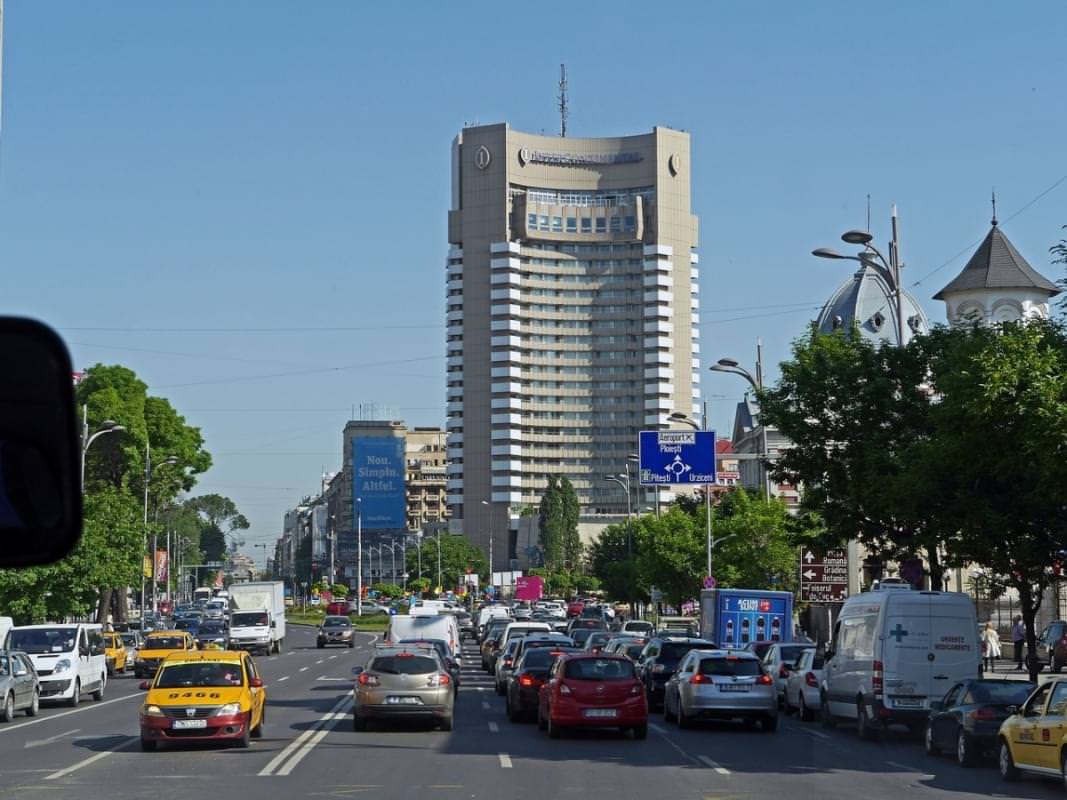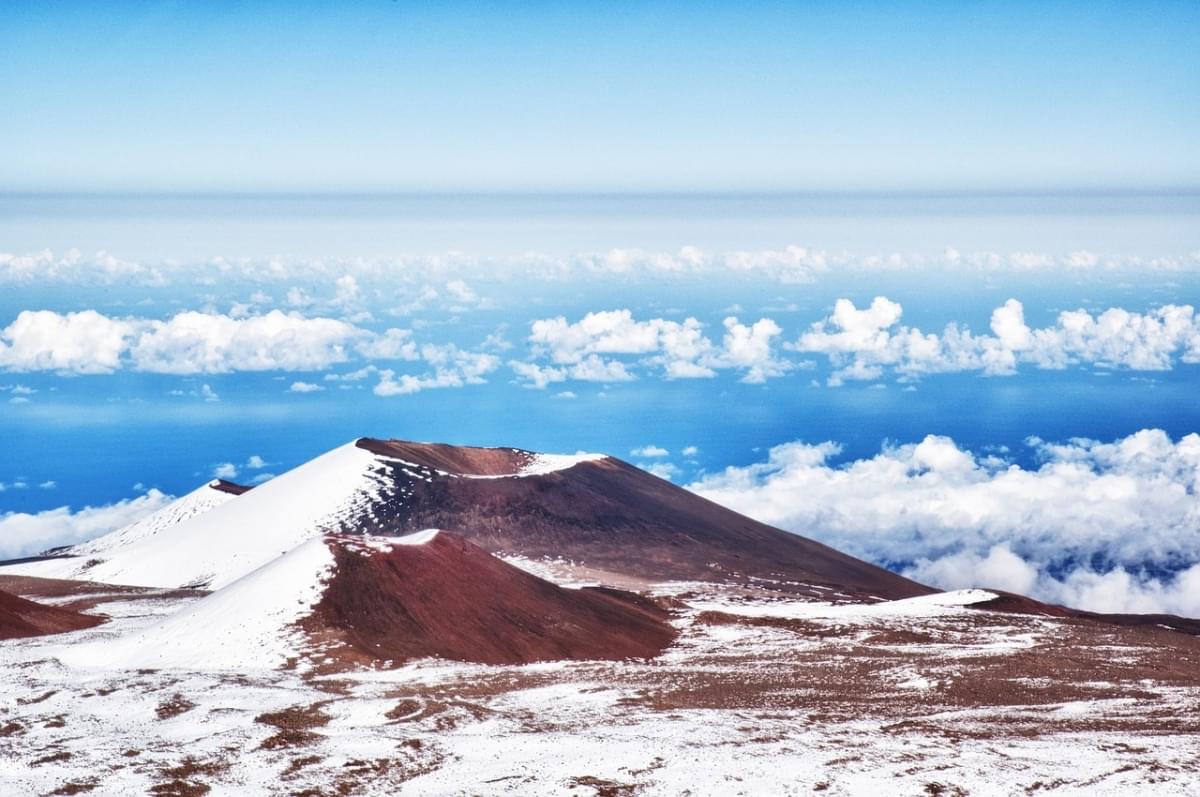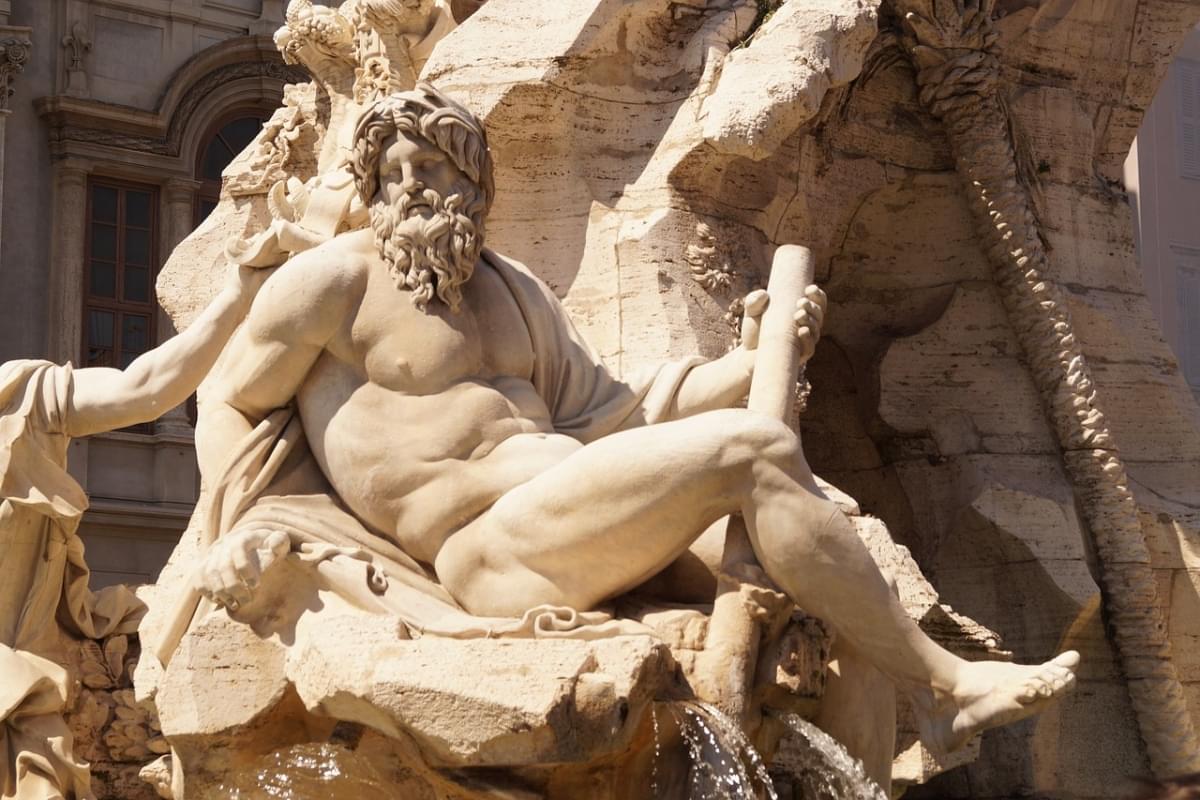
The 10 most beautiful fountains in Italy
 Our beautiful country is rich in breathtaking landscapes, culture, history and art and every year attracts thousands of tourists from all parts of the world.
Our beautiful country is rich in breathtaking landscapes, culture, history and art and every year attracts thousands of tourists from all parts of the world.
There are many Italian treasures, difficult to count them all and practically impossible to be able to see them in a single life. Italy is full of fountains, there is no city or square that does not have this architectural element.
Here is the ranking of the 10 most beautiful fountains in Italy!
NB: The following list is the result of a survey which actively involved the members of the Community. Over 50,000 users were asked to express their preferences, choosing 10 fountains from the over 40 selected by our editorial staff.
10 – La Barcaccia, Rome
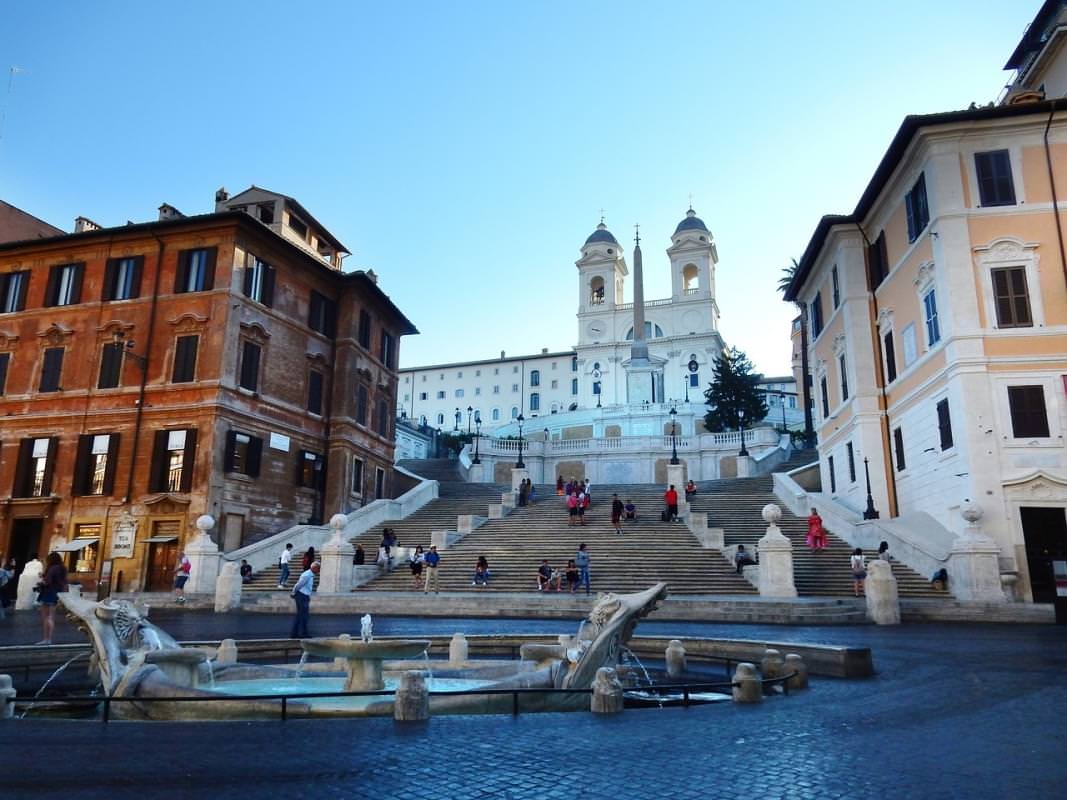 In the heart of the Italian capital, located in Piazza di Spagna at the foot of the steps of Trinità dei Monti, the Barcaccia fountain was built between 1626 and 1629 by Bernini and is one of the symbols of the city.
In the heart of the Italian capital, located in Piazza di Spagna at the foot of the steps of Trinità dei Monti, the Barcaccia fountain was built between 1626 and 1629 by Bernini and is one of the symbols of the city.
The form is that of a semi-submerged boat inside an oval tank and on the sides, from the two large coats of arms of Urban VIII with three bees, symbol of the Barberini family (who commissioned the work), the water comes out to simulate the sinking of the boat.
On the inside, instead, there are two suns with the human face from whose mouths water gushes.
9 – Fountain of the 99 Spouts, L’Aquila
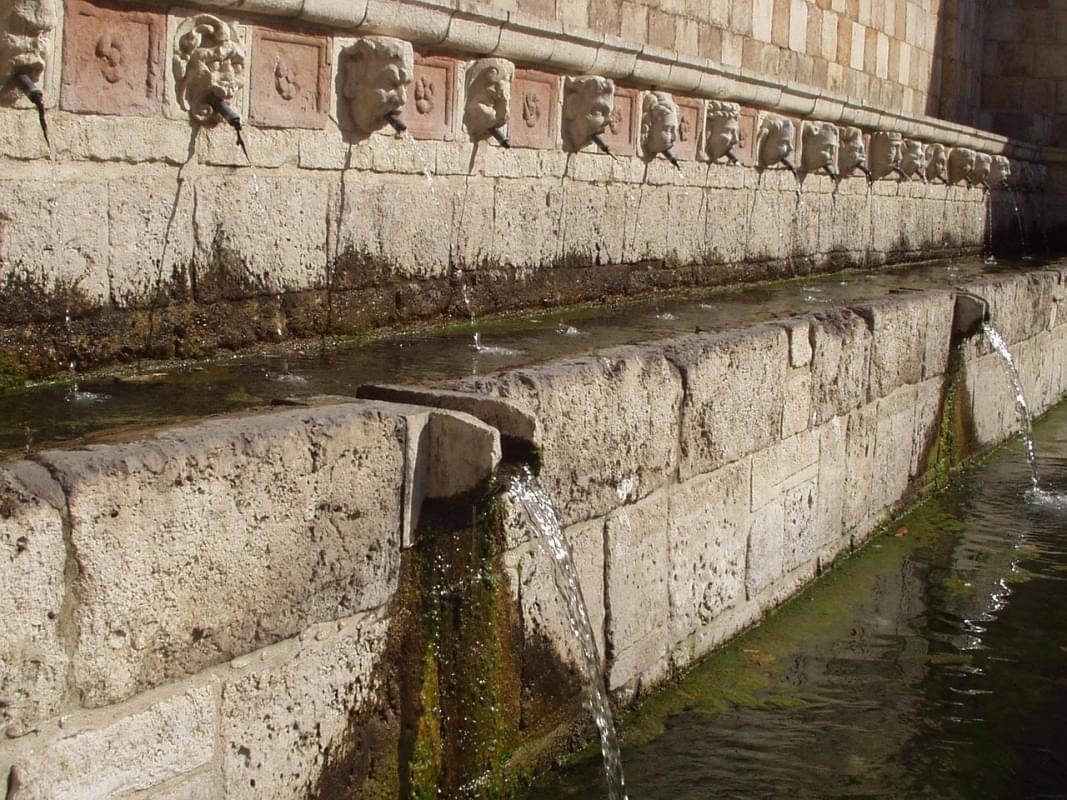 Symbol, together with the Basilica of Collemaggio, of the city of L’Aquila, fountain is located at the Rivera, one of the oldest areas of the historic center.
Symbol, together with the Basilica of Collemaggio, of the city of L’Aquila, fountain is located at the Rivera, one of the oldest areas of the historic center.
Recently restored following the strong earthquake of 2008, it was built in 1272 by the architect Tancredi de Pentima and occupies almost the entire perimeter of the quadrangular square.
In marble and travertine it is made up of ninety-three stone masks and six spouts single from which water flows.
According to tradition, the 99 spouts represented the ninety-nine castles of the district that contributed to the creation of L’Aquila in the 13th century.
8 – Fonte Gaia, Siena
 This monumental fountain it is located in Piazza del Campo in Siena and it was inaugurated in 1346 when it was made to gush for the first time, arousing the amazement and joy of the citizens: from this exultation the name “Gaia” was born.
This monumental fountain it is located in Piazza del Campo in Siena and it was inaugurated in 1346 when it was made to gush for the first time, arousing the amazement and joy of the citizens: from this exultation the name “Gaia” was born.
The imposing structure calls up an altar and its operation makes use of a series of underground pipes dating back to the Middle Ages.
In 1409, Jacopo della Quercia was entrusted with the task of arranging and decorating it with sculptures and low reliefs including a Madonna with Child, the Creation of Adam, the Hunt from Eden and much more.
The fountain that can be seen today, however, it is a copy of 1859 in Carrara marble made by Tito Sarrocchi, while the original has been restored and since 2011 is kept in the Museum Complex of Santa Maria della Scala.
7 – Fontana Maggiore, Perugia
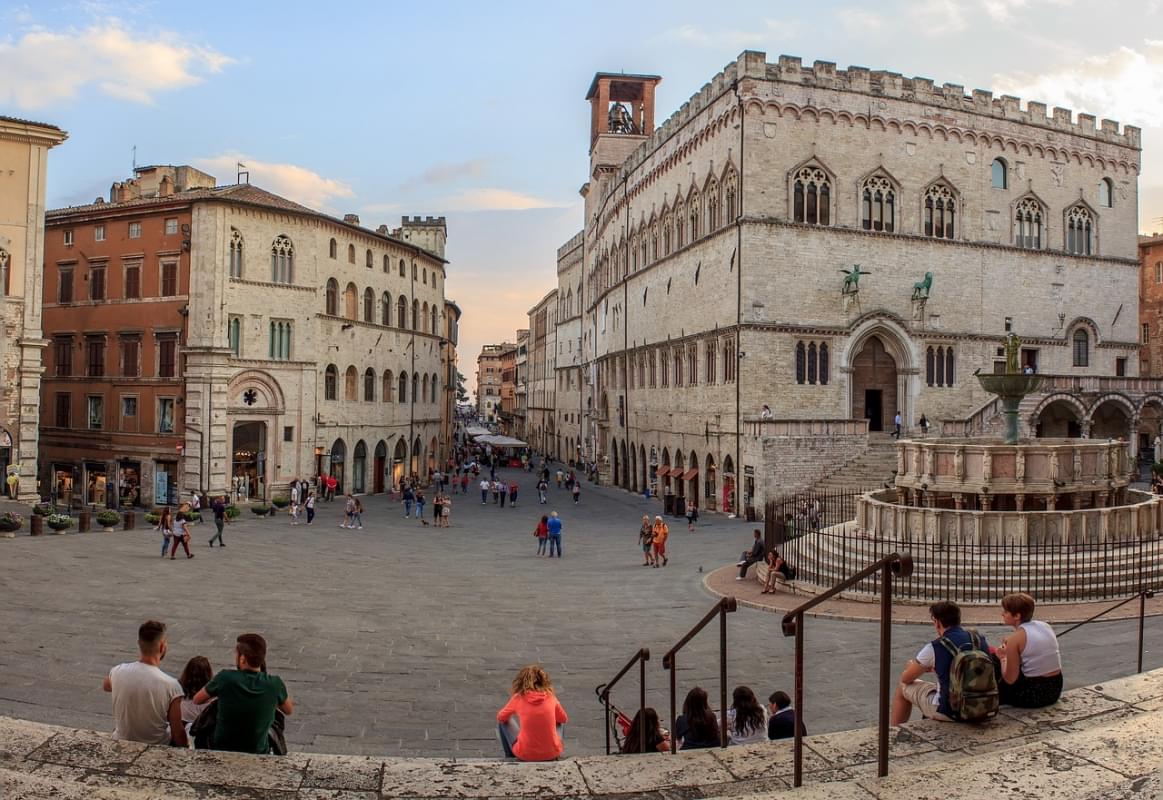 Masterpiece of the Medieval sculpture, the Fontana Maggiore was built by Nicola and Giovanni Pisano between 1278 and 1280 with the intention of celebrating the new aqueduct.
Masterpiece of the Medieval sculpture, the Fontana Maggiore was built by Nicola and Giovanni Pisano between 1278 and 1280 with the intention of celebrating the new aqueduct.
The fountain, in marble, bronze and Assisi stone, is formed by two circular tanks superimposed decorated with 50 bas-reliefs and 24 statues; in the lower part there is a scene of the agrarian tradition, the months of the year with the zodiac signs, the Bible, the history of Rome and the Liberal Arts.
The upper basin, on the other hand, is made up of 24 slabs separated by statues representing sacred, historical and allegorical figures.
Finally the whole is surmounted by a bronze cup crowned with a group of three nymphs representing Faith, Hope and Charity.
6 – Fountain of Neptune, Tivoli
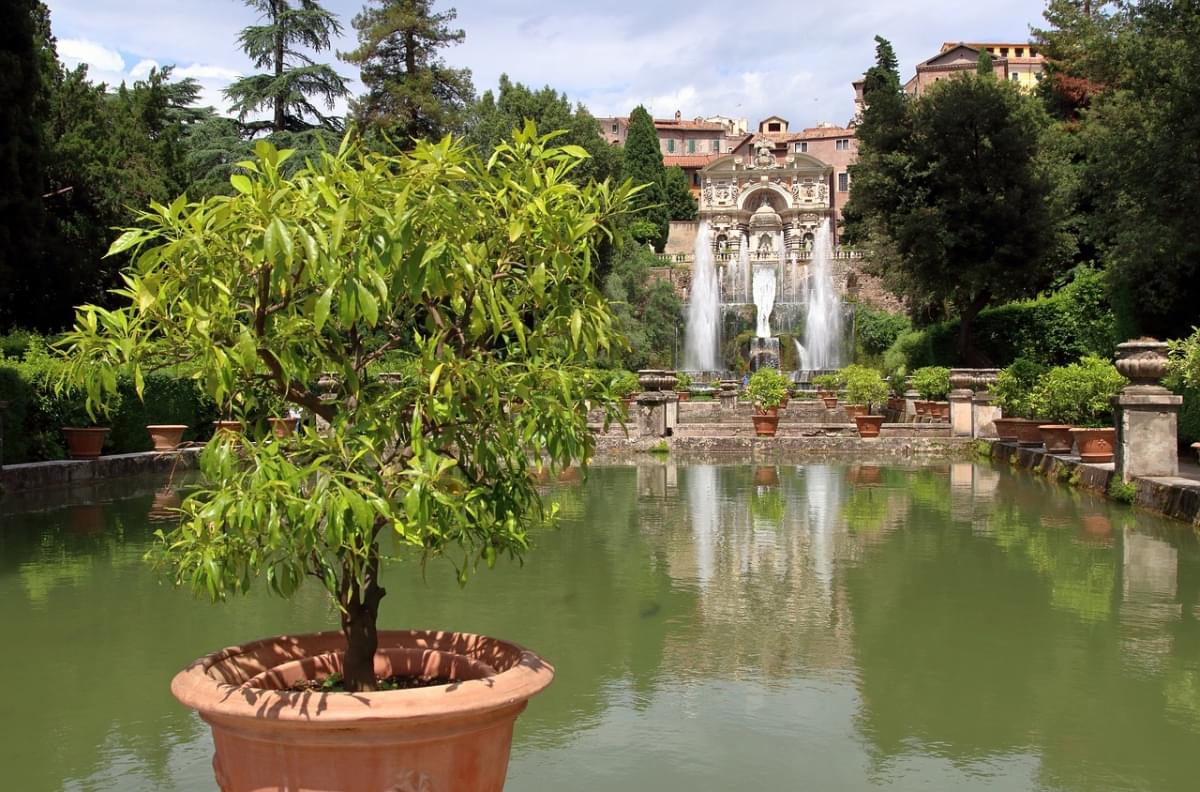 Inside the magnificent Villa D’Este in Tivoli, among terraces, stairways, avenues and gardens there are many beautiful fountains and among these the imposing Fountain of Neptune stands out.
Inside the magnificent Villa D’Este in Tivoli, among terraces, stairways, avenues and gardens there are many beautiful fountains and among these the imposing Fountain of Neptune stands out.
Scenic and much admired it is also the most recent because it was built by Attilio Rossi and the engineer Emo Salvati in 1927 who restored the previous version of Bernini.
What most attracts visitors is the amount of water which comes by a natural law projected in very high columns which often creates magnificent rainbows for a play of light between the sun and splashes.
The fountain is formed by a higher part where the balustrade of the square in front of the Organ fountain is located and underneath there are three nymphaeums where you can hear the sound of the water.
5 – Fountain of the four Rivers, Rome
 In the center of Piazza Navona in Rome, in front of the church of Sant’Agnese in Agone, between 1648 and 1651 Gian Lorenzo Bernini designed this fountain commissioned by Pope Innocent X.
In the center of Piazza Navona in Rome, in front of the church of Sant’Agnese in Agone, between 1648 and 1651 Gian Lorenzo Bernini designed this fountain commissioned by Pope Innocent X.
The work draws a great cliff, excavated from a cave with four openings, which supports the granite obelisk. In the corners are the four marble statues representing the rivers of the continents known per hour: the Danube, the Ganges, the Nile and the Rio della Plata.
Above the cliff then there are the two large coats of arms of the pope’s family with the dove carrying an olive branch, and the same dove is also found on the top of the obelisk.
4 – Fountain of Diana and Atteone, Caserta
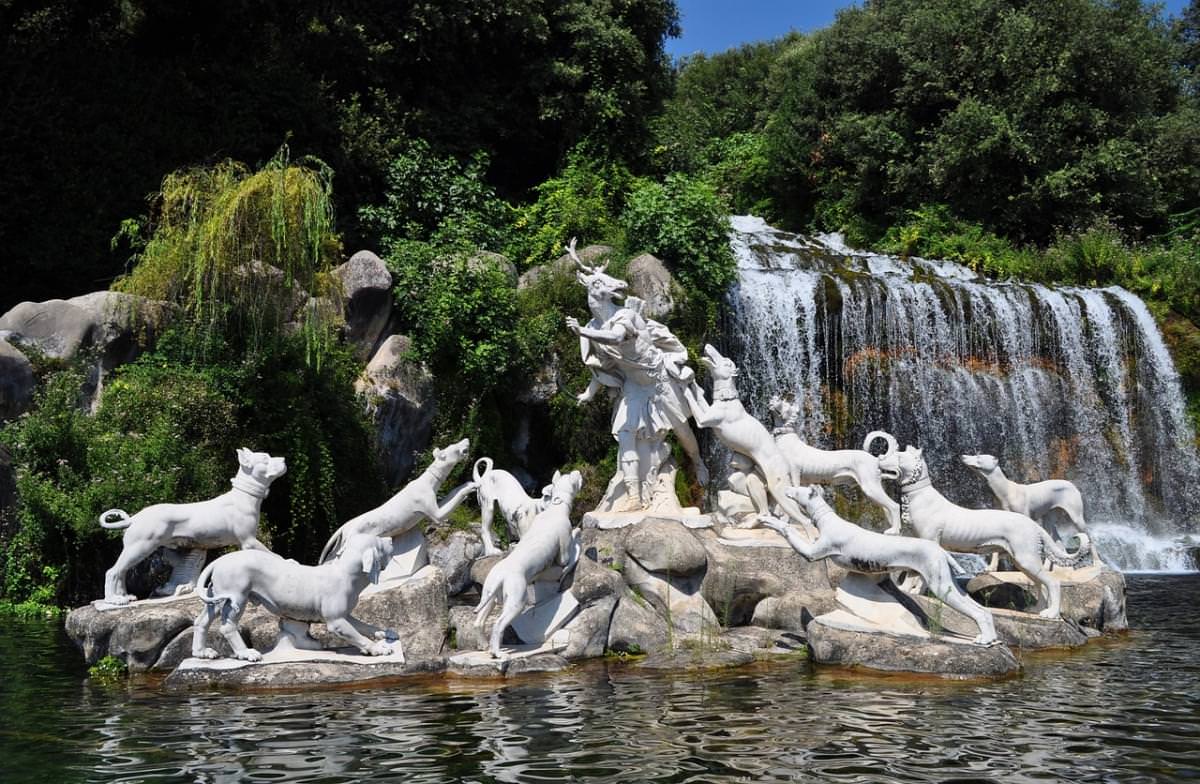 In the magnificent gardens of the Royal Palace of Caserta, at the end of the Parco della Grande Cascata, it is possible to admire this beautiful fountain which in addition to having an artistic value hides a legend.
In the magnificent gardens of the Royal Palace of Caserta, at the end of the Parco della Grande Cascata, it is possible to admire this beautiful fountain which in addition to having an artistic value hides a legend.
Inside the pool, on the rocks bathed by the gushing water, on one side there is the statue of Diana (goddess of hunting and the woods) surrounded by nymphs who are about to throw themselves into the water, and on the other side there is it is Actaeon, who having looked at the naked goddess, is transformed into a deer which will then be mauled by his own dogs.
This masterpiece, dating back to 1773, can be attributed to Tommaso and Pietro Solari, Paolo Peserico and Angelo Brunelli who worked on this fountain as well as on the other architectural elements of the palace.
3 – Fountain of Neptune, Bologna
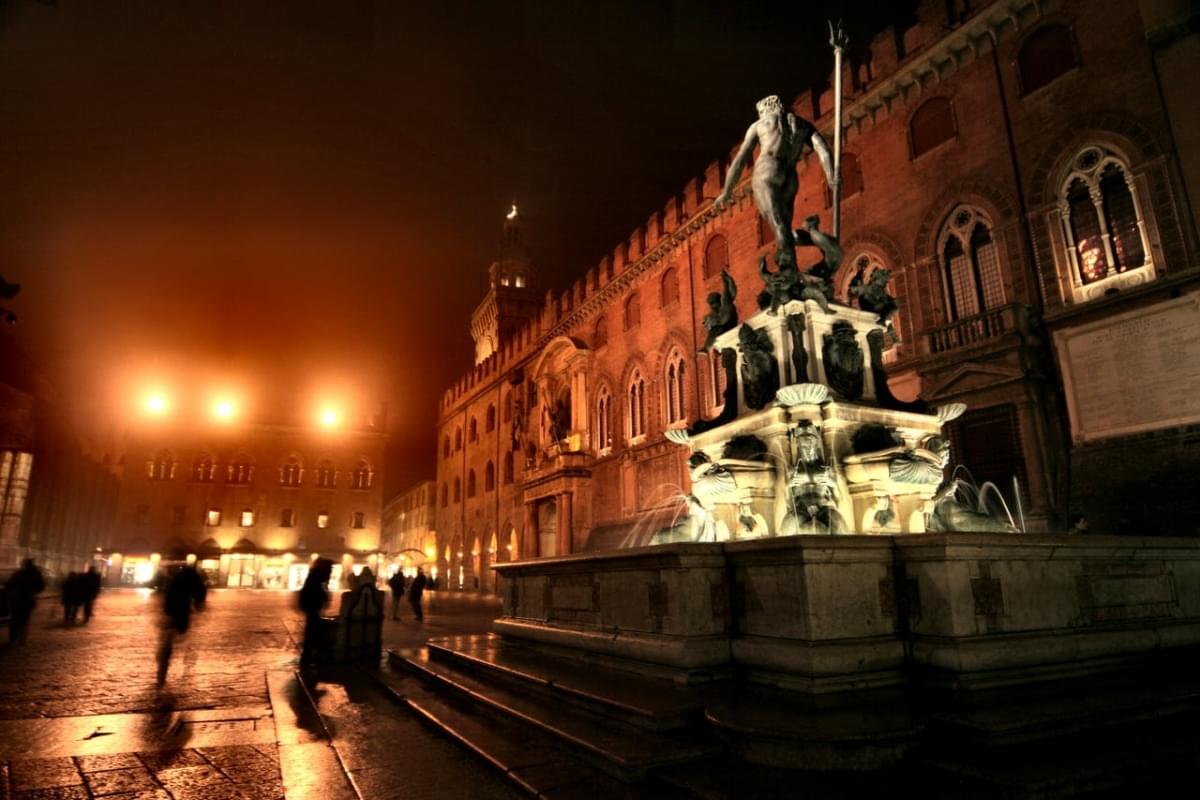 Nicknamed by the Bolognese “al Zigant” (the Giant), the fountain is located in Piazza Nettuno in Bologna and was commissioned by the vice-delegate Pier Donato Cesi who wanted to glorify the pontificate of Pope Pius IV.
Nicknamed by the Bolognese “al Zigant” (the Giant), the fountain is located in Piazza Nettuno in Bologna and was commissioned by the vice-delegate Pier Donato Cesi who wanted to glorify the pontificate of Pope Pius IV.
The architect Tommaso Laureti and the sculptor Giambologna took care of the work between 1563 and 1566 and gave shape to this large fountain.
The tub, covered in Verona marble, is located on a base of three steps; in the center there is a plinth flanked by four nereids that support the breasts, decorated with papal coats of arms and four cherubs holding as many dolphins.
At the center of the pedestal then theimmense serpent-like figure of Neptune about 320 cm high, which stretches the right hand against the wind, an explicit message of exaltation of the papal dynasty.
2 – Fontana Pretoria, Palermo
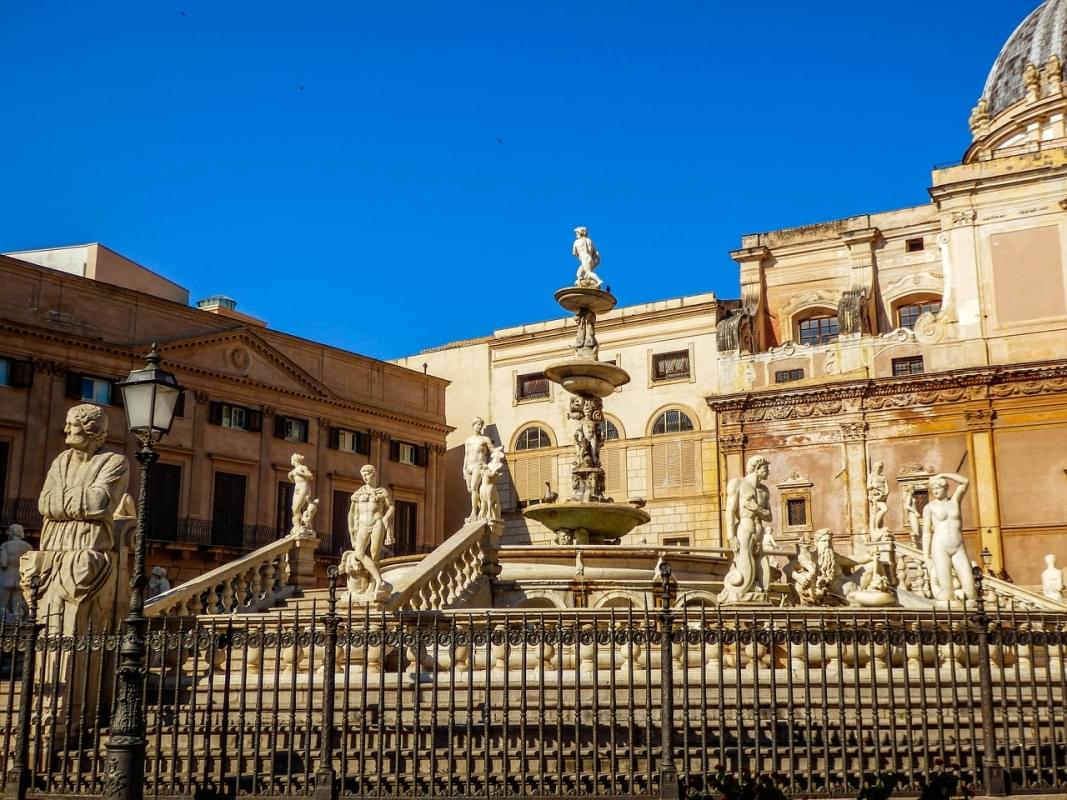 In the center of the square of the same name in Palermo, between the Kalsa district and near the corner of Cassaro with Via Maqueda, is this fountain built by Francesco Camilliani in 1554 in Florence and transported in 1581 to the Sicilian capital.
In the center of the square of the same name in Palermo, between the Kalsa district and near the corner of Cassaro with Via Maqueda, is this fountain built by Francesco Camilliani in 1554 in Florence and transported in 1581 to the Sicilian capital.
It was built for the garden of a Tuscan palace purchased from the city of Palermo.
For transportation it was disassembled into many pieces, some of which broke and others were lost.
It was thus the task of Camillo Camillani, son of the original sculptor, arrange and adapt the work; Michelangelo Naccherino also participated with him, who created the statue of a river and the figure of a triton.
1 – Trevi Fountain, Rome
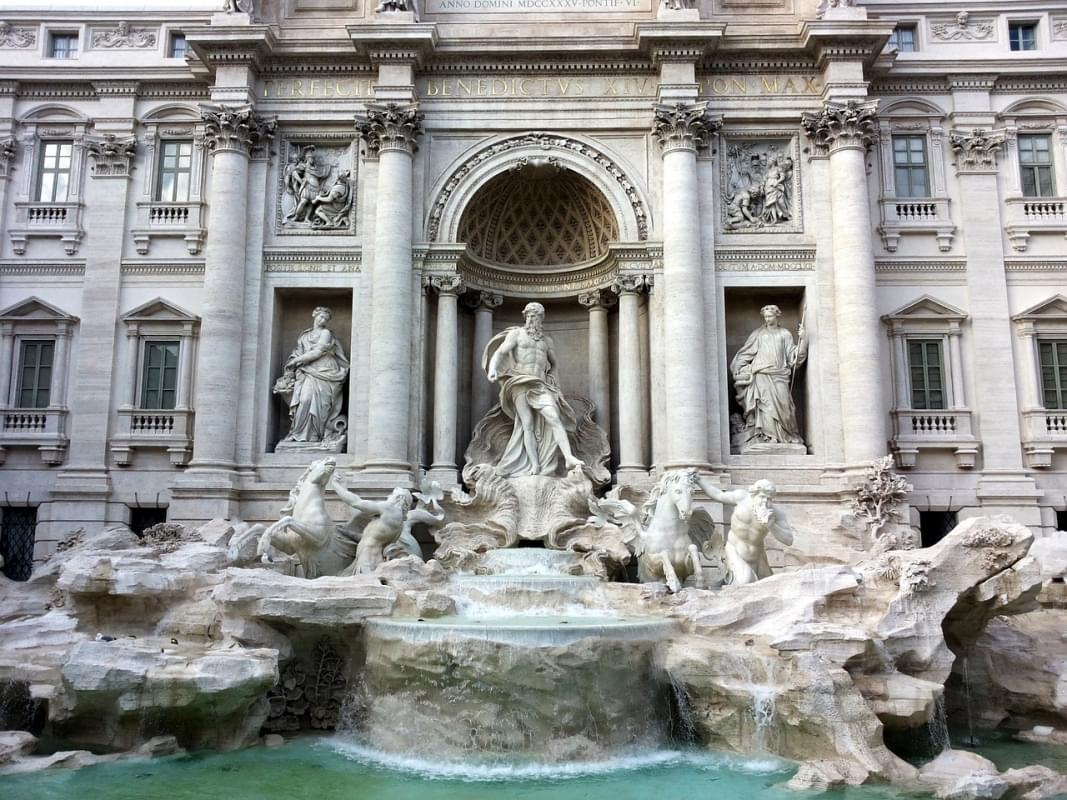 At the top of the ranking of the most beautiful fountains in Italy is that of Trevi in Rome, one of the largest and most famous in the capital, also known to bring good luck if you toss a coin inside.
At the top of the ranking of the most beautiful fountains in Italy is that of Trevi in Rome, one of the largest and most famous in the capital, also known to bring good luck if you toss a coin inside.
The work built by Nicola Savi on the facade of Palazzo Poli was commissioned by Pope Clement XII in 1731 and it took about 30 years to complete, so much so that it was finished by another architect, Giuseppe Pannini.
The theme is that of the sea and the fountain is inserted in a large swimming pool rectangular with rounded corners surrounded by a walkway enclosed within a small staircase.
In the center a large niche with inside the statue of Oceano, the muscular and proud-eyed god; on the sides two smaller niches occupied by the statue of Health and that of Abundance.
The fountain then is adorned with many other decorations and bas-relief panels depicting characters and elements of nature.







